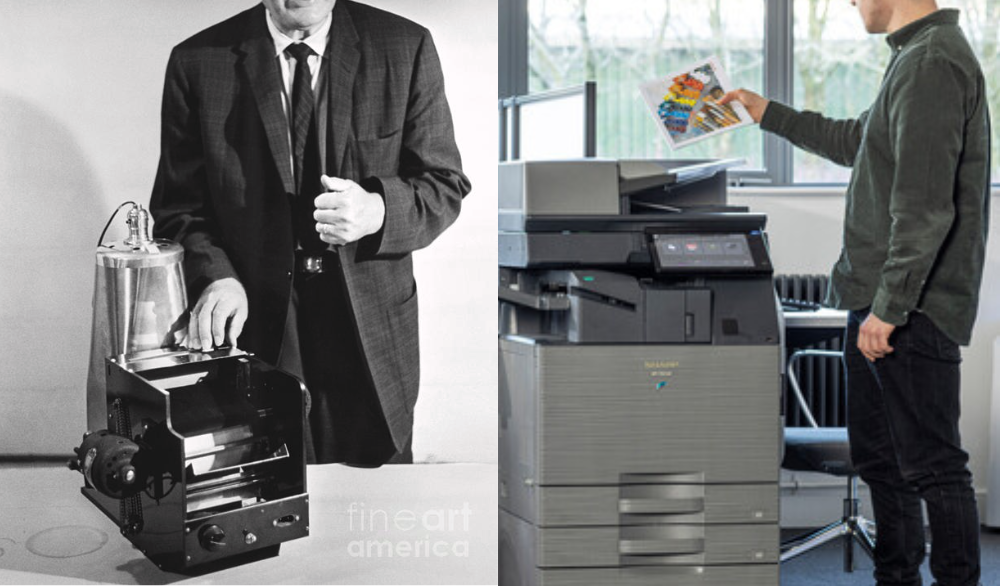
03 Jan The History of The Photocopier
A Potted History of The Photocopier
The history of the photocopier is a fascinating tale of persistence, innovation, and eventually, a complete revolution in how we manage information. Here’s a timeline of key events:
1938: The inventor of the photocopier, Chester Carlson, a patent attorney frustrated by tedious hand-copying, creates “electrophotography” in his New York apartment kitchen. Using a light-sensitive zinc plate, a bright light, and sulfur powder, he produces the first-ever photocopy: “10-22-38 Astoria,” the date and location.
1944: After years of rejections, Carlson teams up with the Haloid Company (later Xerox) to develop and market his invention.
1949: The Haloid Xerox Model A, the first commercial xerographic copier, arrives. It’s bulky, slow, and expensive, but marks a significant milestone.
1959: The Xerox 914, a faster, more user-friendly machine, revolutionizes office work. With its push-button operation and ability to produce high-quality copies, it becomes a cultural icon and synonymous with photocopying.
1960s-70s: Xerox dominates the market, so much so that “Xeroxing” becomes a verb in North America. Meanwhile, technology advances, bringing smaller desktop copiers, colour photocopying, and improved efficiency.
1980s-90s: Competition heats up with Japanese brands like Canon and Ricoh entering the market. Laser printers start challenging xerography, offering faster speeds and digital integration.
2000s-Present: Multifunction devices combining copying, printing, scanning, and faxing become the norm. Digital technologies like cloud storage and mobile printing further change the game.
The impact of the photocopier:
Increased productivity: It dramatically reduced the time and effort required to reproduce documents, boosting efficiency across various sectors.
Democratization of information: Easy access to copies spread knowledge and ideas, contributing to advancements in education, research, and business.
Cultural influence: The photocopier inspired artistic movements like xerography and helped spread counterculture movements through flyers and zines.
Today, the photocopier continues to evolve, but its core legacy remains – a technology that forever changed how we create, share, and consume information.
If you are in the process of looking at your print environment and looking to save money, time and streamline processes. Or, if you just want to check you are on the best print option for your business with your incumbent supplier, Call our experienced Account Management team for a no obligation chat on 01892 664155

